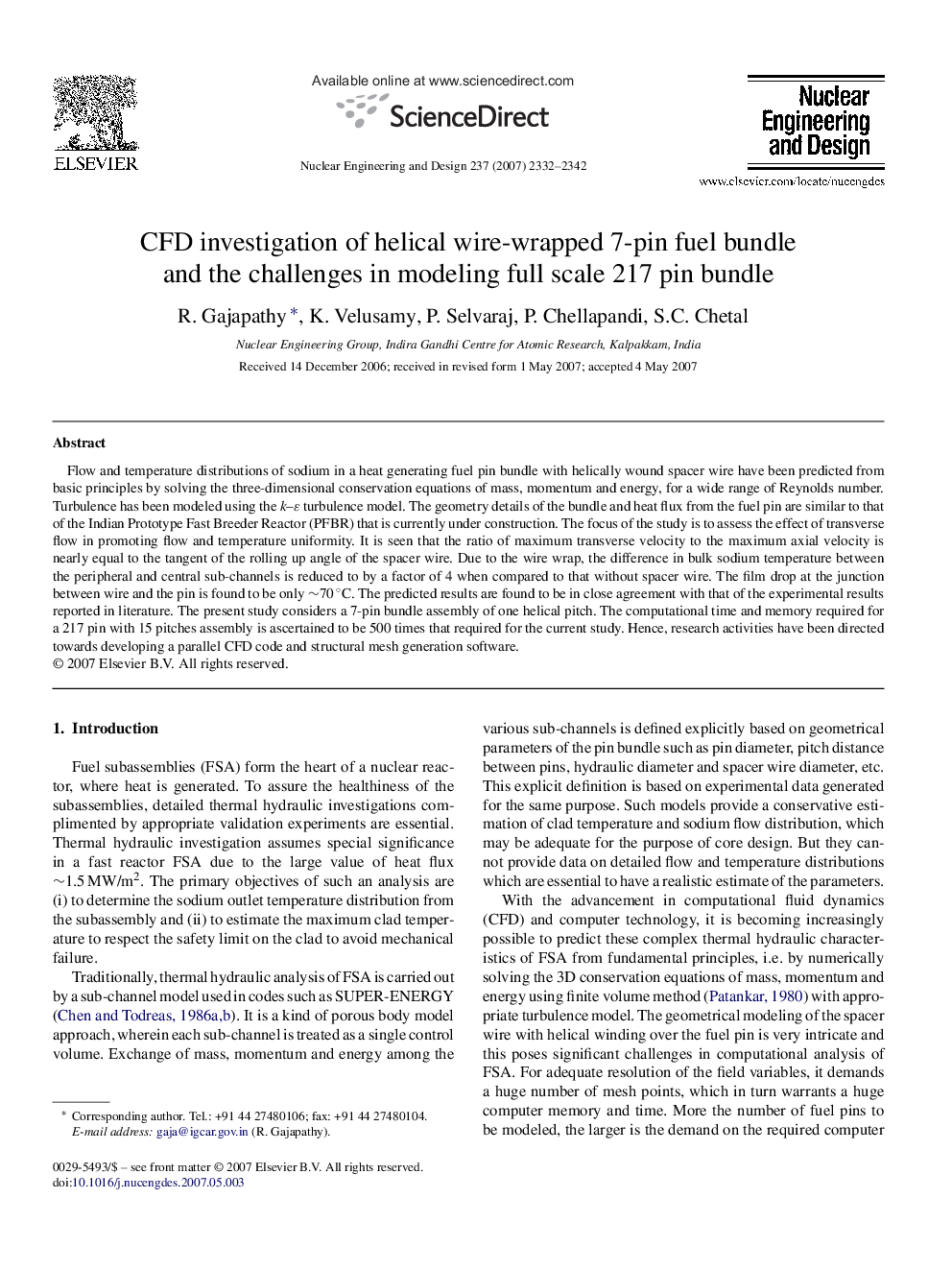| Article ID | Journal | Published Year | Pages | File Type |
|---|---|---|---|---|
| 298981 | Nuclear Engineering and Design | 2007 | 11 Pages |
Flow and temperature distributions of sodium in a heat generating fuel pin bundle with helically wound spacer wire have been predicted from basic principles by solving the three-dimensional conservation equations of mass, momentum and energy, for a wide range of Reynolds number. Turbulence has been modeled using the k–ɛ turbulence model. The geometry details of the bundle and heat flux from the fuel pin are similar to that of the Indian Prototype Fast Breeder Reactor (PFBR) that is currently under construction. The focus of the study is to assess the effect of transverse flow in promoting flow and temperature uniformity. It is seen that the ratio of maximum transverse velocity to the maximum axial velocity is nearly equal to the tangent of the rolling up angle of the spacer wire. Due to the wire wrap, the difference in bulk sodium temperature between the peripheral and central sub-channels is reduced to by a factor of 4 when compared to that without spacer wire. The film drop at the junction between wire and the pin is found to be only ∼70 °C. The predicted results are found to be in close agreement with that of the experimental results reported in literature. The present study considers a 7-pin bundle assembly of one helical pitch. The computational time and memory required for a 217 pin with 15 pitches assembly is ascertained to be 500 times that required for the current study. Hence, research activities have been directed towards developing a parallel CFD code and structural mesh generation software.
